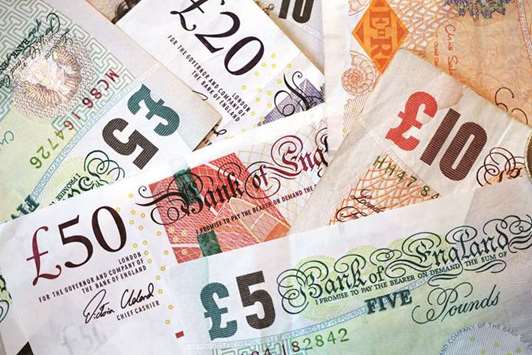In the space of just three days, currency and bond traders have had their conviction on the possibility of two interest-rate hikes this year in the UK shaken.
Sterling slid and gilts rallied yesterday as inflation slowed to the weakest level in a year, the latest data point to suggest a full-blown tightening cycle isn’t needed after wage growth came in slower than expected on Tuesday.
While a hike in May is still almost fully priced in by markets, the chances of a second in 2018 have fallen. Traders now assign about a 30% chance of a follow-up in November, down from more than 50% at the end of last week.
This means a more bearish outlook for sterling, with options markets now showing the UK currency is more likely to fall back to $1.40 in the next month from around $1.42 now, than rally to $1.45.
On the other hand, the data misses are good news for gilt investors, with UBS Group AG’s John Wraith predicting further outperformance as the market continues to adjust its expectations for tighter policy.
“Gilts should outperform further as it becomes clear that future hikes are increasingly unlikely and inflation expectations and break-evens moderate further,” said Wraith, head of UK macro rates strategy at the firm. “There will be some caution around as the monetary policy committee has been so determined to be hawkish over recent months, but it’s hard to see how they stick to those guns if inflation barometers keep cooling so swiftly.”
Flatter outlook: BoE policy makers, who raised the benchmark rate for the first time in a decade in November, have said that the UK needs more increases to help stop the economy from overheating, with officials particularly concerned about domestically generated inflation.
Still, data this week have done little to suggest price gains are running out of control, with inflation dropping to 2.5% in March, and wage growth staying below 3%.
The UK 10-year breakeven rate – a market-derived gauge of expected inflation – slumped to the lowest level since August amid further signs that the post-Brexit drop in sterling is fading rapidly from consumer prices.
The markets’ flatter outlook for rates is shared by economists in the latest Bloomberg survey. While about three-quarters now see a rate increase in May, most expect no follow-up until 2019.
“Justifying any hike is getting tough with a print like that but the market doesn’t seem ready to let go of the first one just yet,” said Adam Dent, a strategist at Banco Santander SA. “Justifying a third step in the cycle seems a stretch from here.”

The sterling slid and gilts rallied yesterday as inflation slowed to the weakest level in a year, the latest data point to suggest a full-blown tightening cycle isn’t needed after wage growth came in slower than expected on Tuesday


